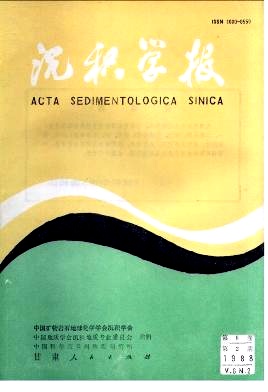SEDIMENTARY CHARACTERISTICS OF EARLY CAMBRIAN YUTANG ORGANIC REEFS IN WESTERN HUNAN
- Received Date: 1986-04-10
- Publish Date: 1988-06-10
Abstract: Yutang organic reefs in the third member of the Early Cambrian Qingxudong Formation from Huayuan, western Hunan are distinct kinds of epiphyton barrier reefs in the world. They stretch along north-northeast discontinuously and are located on the south-eastern edge of Chuan-Dian-Qian (Sichuan-Yunnan-Guizhou) Carbonate Platform. They belong to a barrier reef zone about 100km long, which is composed of a series of elongated reef bodies. On their east side is Xiang-Qian (Hunan-Guizhou) Open Sea Basin. The geological background of reef formation was controlled by the upthro-wn block of Tongren-Dayong giant fault. Individual reef bodies are 2-6km long, 0.2-0.8km wide, and their high/wide are l:5-1:20, which appear like domes with steep east side and gentle west side. The space between two reef bodies where exists tidal channel or oolitic shoal is 1.5-2km. The main reef-building organisms are: Epiphyton plumosum, E. racemosum, E.pusillum, E.nubilum; Nicholsonia sp.; Gircanella sp.; and other blue-green algae. The attaching organisms are a few trilobites, ostracodas and echinoderms. According to the features of reef rock assemblages, Yutang organic reef can be divided into three subfacies: 1) reef core-main part of reef body, on the slope break line at the carbonate platform margin. In this area, there is organic ecologic zonation from front to back, i. e. Nicholsonia sp. Epiphyton sp. Girvanella sp.. The formef two kinds of algae have framework like straight or winding clumpy branches, which the bladed calcites often fill in the space between the tangled branches. These algae are 2-40mm high, and have the ability of resistant. They always formed framestones and made up reef crest in the front margin of reef core. The later shows level-sleep and tangled draping structure and occurred in the back of reef core, which slightly inclines towards open sea. It often captured a lot of mud and formed bindstones in reef flat of the back margin of reef core. The profile of the reef core consists of reef base, reef crest, reef flat, and reef shoal, and includes three superimposed reef-building sedimentary cycles, totally 120-160m thick; 2) reef front which includes steep upper slope with angle of 430, and gentle lower slope with angle decreasing to 10. The upper slope is composed of talus breccia sediments from reef core, which is 100-300m wide, 60-100m thick,forming an upper slope apron in the reef front. On the lower slope, develop proximal and distal carbonate turbidite about 40-60m thick; 3) reef back-lagoon and tidal flat which gently inclined towards the carbonate platform and were protected by the barrier reef. They consist of alternate algal pellet limestone and algal calcarenite or stromatolitic limestone, of 80-100m thick. They were connected by each tidal channel between two reef bodies with open sea. On the column of the third member of Qingxudong Formation, the three reef-building sedimentary cycles of Yutang organic reef as above mentioned, can be corresponed to three depressing processes of sedimentary basin caused by syndeposi-tional faulting. Each cycle took place in the temporary stable period after the depression of the basin. Experienced shallowing of sea water, the depth of water varied from 30m to Om in the reef-building period,energy of sedimentary environment increases, and then becomes continuous turbulent.
| Citation: | Zheng Rongcai, Zeng Yunfu. SEDIMENTARY CHARACTERISTICS OF EARLY CAMBRIAN YUTANG ORGANIC REEFS IN WESTERN HUNAN[J]. Acta Sedimentologica Sinica, 1988, 6(2): 61-67. |






 DownLoad:
DownLoad: